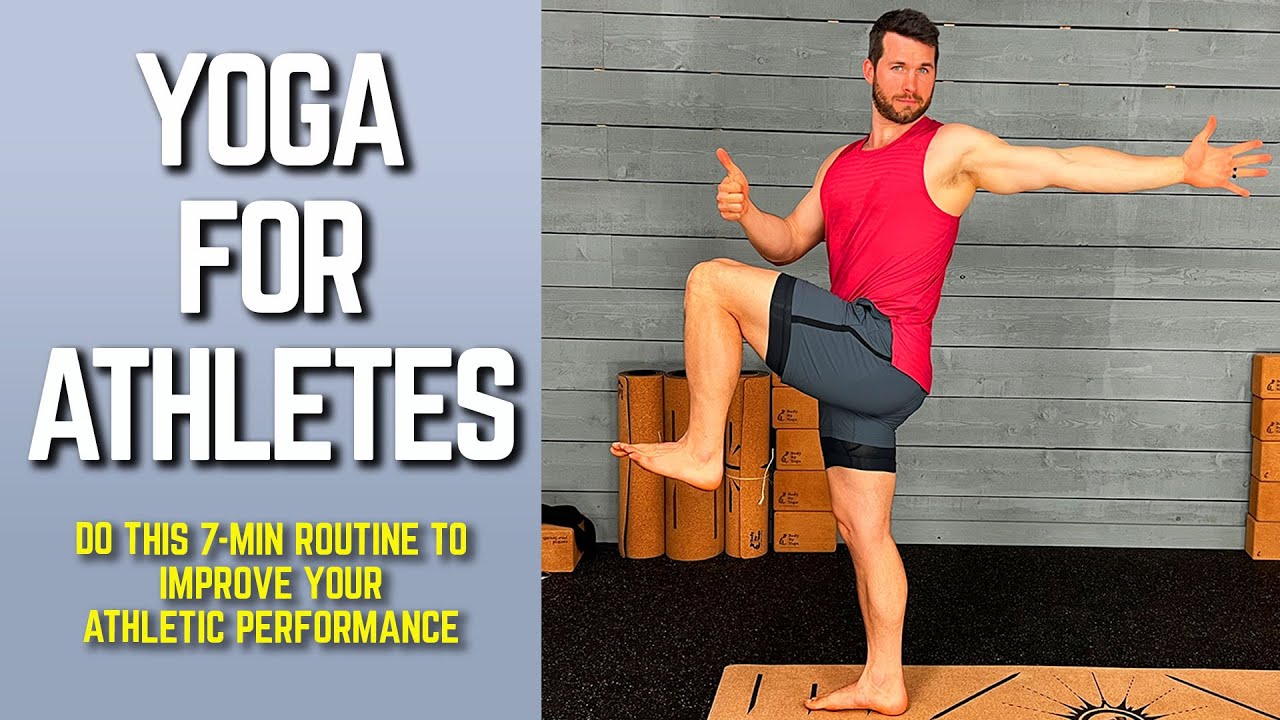Athletes can benefit greatly from practicing yoga, as it helps improve flexibility, balance, strength, endurance, and focus, all of which contribute to better performance in sports. This article highlights 10 yoga poses that can aid athletic performance, including Downward-facing dog, Warrior one, Triangle pose, Boat pose, Cobra pose, Camel pose, Pigeon pose, Crescent lunge, Child’s pose, and Corpse pose. Each pose targets specific muscles and helps build strength and stability in different parts of the body, reducing the risk of injury and promoting overall health and well-being. By incorporating yoga into their training routines, athletes can improve their athletic performance and enhance their physical and mental health.
10 Yoga Poses for Improved Athletic Performance
Yoga is a practice that can be beneficial to anyone and everyone, not necessarily just for those who consider themselves yogis. Athletes, in particular, can benefit greatly from implementing yoga into their performance routines. The practice of yoga can help athletes improve their flexibility, balance, strength, endurance and focus, all of which can contribute to better performance in their chosen sport.
1. Downward-facing dog
This pose stretches the hamstrings, calves, and spine, while also strengthening the arms and shoulders, which can be beneficial for swimmers, runners, cyclists, and tennis players. Downward-facing dog also increases blood flow to the brain, which can help improve focus and reduce fatigue.
2. Warrior one
This pose strengthens the legs, shoulders, and back muscles while stretching the hip flexors and chest. Warrior one is particularly helpful for athletes who rely on explosive movements, like sprinters or basketball players, as it helps to build strength and stamina in the legs and reduces the risk of injury.
3. Triangle pose
This pose stretches the hamstrings, hips, and spine while also strengthening the legs, back, and core. Triangle pose can be very beneficial for those who participate in sports that require lateral movement, like soccer, tennis, or football, as it helps to improve balance and coordination.
4. Boat pose
This pose strengthens the core muscles, which are essential for athletes in all sports. A strong core can help to improve balance and stability, reduce the risk of injury, and enhance overall performance. Boat pose is particularly helpful for runners, swimmers, and gymnasts.
5. Cobra pose
This pose is great for building strength in the back muscles, which can be particularly beneficial for athletes who engage in sports that require a lot of upper body strength, like rowers, climbers, or weightlifters. Cobra pose also helps to improve posture and reduce back pain.
6. Camel pose
This pose stretches the hip flexors, quadriceps, and chest muscles while also strengthening the back and core. Camel pose can be beneficial for athletes who frequently engage in movements that require them to be hunched over, like runners, cyclists, and tennis players.
7. Pigeon pose
This pose is excellent for improving flexibility and mobility in the hips, which can be beneficial for athletes who participate in sports that require a lot of running, jumping, or other explosive movements, like basketball or volleyball.
8. Crescent lunge
This pose stretches the hips, hamstrings, and calves while also strengthening the legs and core. Crescent lunge can be beneficial for athletes who rely on strong, explosive movements, like martial artists or sprinters, as it helps to build strength and endurance in the legs.
9. Child’s pose
This pose is great for reducing stress and promoting relaxation, which can be very beneficial for athletes who participate in sports that require a lot of mental focus and concentration, like golf or shooting. Child’s pose is also useful for stretching the quadriceps and hip flexors.
10. Corpse pose
This pose is the ultimate relaxation pose, which is very beneficial for athletes who engage in sports that require a lot of physical demand and mental focus. Corpse pose helps to reduce stress and tension, promote relaxation, and improve sleep quality.
Conclusion
Incorporating yoga into an athlete’s training routine can be very beneficial for improving athletic performance, reducing the risk of injury, and promoting overall health and well-being. By incorporating these ten poses into your practice, athletes can reap the benefits of improved flexibility, strength, balance, endurance, and focus, which can contribute to better performance in their chosen sport.
